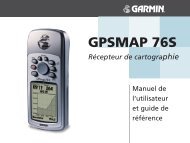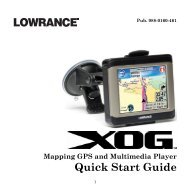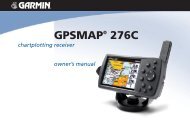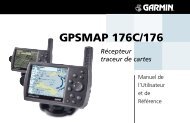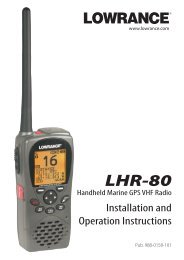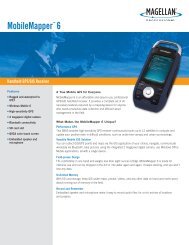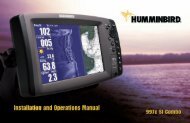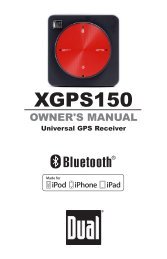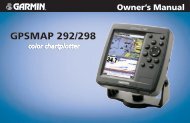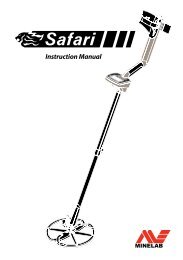X515C DF & X510C Manual - Lowrance
X515C DF & X510C Manual - Lowrance
X515C DF & X510C Manual - Lowrance
Create successful ePaper yourself
Turn your PDF publications into a flip-book with our unique Google optimized e-Paper software.
WARNING:<br />
Do not remove any material from your inner hull unless<br />
you know the hull's composition. Careless grinding or<br />
cutting on your hull can result in damage that could<br />
sink your boat. Contact your boat dealer or manufacturer<br />
to confirm your hull specifications.<br />
Fill with resin<br />
Flotation material<br />
Fill with<br />
Inner hull<br />
Epoxy to hull first<br />
Outer hull<br />
Epoxy the transducer to a solid portion of the hull.<br />
For example, some (but not all) manufacturers use a layer of fiberglass,<br />
then a core of balsa wood, finishing with an outer layer of fiberglass.<br />
Removing the inner layer of fiberglass and the balsa wood core exposes<br />
the outer layer of fiberglass. The transducer can then be epoxied directly<br />
to the outer layer of fiberglass. After the epoxy cures for 24<br />
hours, fill the remaining space with polyester resin. When the job is<br />
finished, the hull is watertight and structurally sound. Remember, the<br />
sonar signal must pass through solid fiberglass. Any air bubbles in the<br />
fiberglass or the epoxy will reduce or eliminate the sonar signals.<br />
Testing Determines Best Location<br />
Ideally, the shoot-thru transducer should be installed as close to the<br />
transom as possible, close to the centerline. This will give you the best<br />
performance during high speed maneuvers.<br />
Transducer location<br />
(high speed)<br />
Transducer location<br />
(trolling speed)<br />
Shoot-thru-hull transducer locations for<br />
high speed or trolling speed operation.<br />
19



